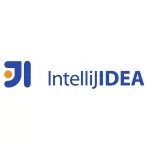Terraform’s Future in Question: Challenges and Alternatives
Terraform has undeniably revolutionized infrastructure as code, empowering organizations to manage complex environments efficiently. However, as the technology landscape evolves, challenges and limitations are becoming increasingly apparent. This article explores the potential headwinds facing Terraform, examining its current shortcomings and considering emerging alternatives. By evaluating the strengths and weaknesses of different approaches, we aim to shed light on the future of infrastructure management and identify potential paths forward.
1. Terraform’s Rising Challenges
Terraform has undoubtedly been a game-changer in infrastructure management, but as organizations scale their operations and the complexity of infrastructure grows, challenges begin to emerge.
Scalability Issues
One of the primary hurdles is scalability. As infrastructure expands, managing hundreds or thousands of resources with Terraform can become cumbersome. Long plan and apply times, coupled with the potential for human error, can hinder agility. Additionally, dealing with dependencies between resources can become increasingly complex, leading to slower development cycles.
Configuration Complexity
Terraform’s configuration language, while powerful, can be verbose and prone to errors. As infrastructure grows, maintaining and understanding these configurations becomes a challenge. Large, monolithic Terraform states can be difficult to manage, making it harder to identify and troubleshoot issues. Furthermore, collaboration among multiple teams can be hindered by the complexity of managing shared resources.
State Management Concerns
Terraform’s state file, while essential, is also a single point of failure. If corrupted or lost, it can lead to significant data loss and infrastructure inconsistencies. While backups and version control are recommended, the risk remains. Additionally, managing state files in distributed environments can introduce complexities.
Limitations in Handling Dynamic Resources
Terraform excels at managing static infrastructure resources, but it struggles with dynamic and ephemeral ones. For example, managing short-lived resources like load balancers or auto-scaling groups can be challenging due to Terraform’s imperative approach. This limitation can hinder the adoption of cloud-native architectures that rely heavily on dynamic infrastructure components.
Security Risks
Like any software, Terraform is susceptible to security vulnerabilities. While the Terraform team is diligent in addressing issues, the risk of exploits cannot be ignored. Additionally, managing sensitive information within Terraform configurations can pose security challenges. Protecting secrets and preventing unauthorized access to infrastructure resources requires careful consideration.
These challenges highlight the need for organizations to carefully evaluate Terraform’s suitability for their specific needs and consider alternative approaches or complementary tools to address these limitations.
2. Emerging Alternatives
As the limitations of Terraform become more apparent, organizations are exploring alternative approaches to infrastructure management. While Terraform has its strengths, these emerging tools offer different perspectives and capabilities.
Infrastructure as Code (IaC) Tools
Beyond Terraform, several IaC tools have gained traction. Pulumi, for instance, allows you to use familiar programming languages to define infrastructure, potentially simplifying complex configurations. CloudFormation, AWS’s native IaC tool, provides deep integration with AWS services but might be less flexible for multi-cloud environments. Ansible, traditionally known for configuration management, has expanded its capabilities to include infrastructure provisioning. Each of these tools offers unique strengths and weaknesses, making it essential to evaluate them based on specific project requirements.
Cloud-Native Infrastructure Provisioning
Cloud providers like AWS, Azure, and GCP offer their own infrastructure-as-code solutions. These tools are deeply integrated with cloud services, often providing streamlined workflows and access to platform-specific features. However, they might be less flexible for multi-cloud environments or organizations with complex infrastructure needs.
GitOps for Infrastructure Management
GitOps is an emerging paradigm that leverages Git as the single source of truth for infrastructure configuration. By treating infrastructure as code and using Git for version control, organizations can benefit from improved collaboration, visibility, and rollback capabilities. While GitOps doesn’t replace IaC tools, it complements them by providing a robust framework for managing infrastructure changes.
3. The Future of Infrastructure Management
The landscape of infrastructure management is rapidly evolving. While Terraform has been a cornerstone, its limitations point to the need for a more flexible and adaptable approach.
Hybrid Approaches and Beyond
It’s likely that a one-size-fits-all solution won’t emerge. Instead, organizations will adopt hybrid strategies, combining the strengths of different tools and platforms. For example, using Terraform for foundational infrastructure and Pulumi for more dynamic components could be a viable approach.
The future may also bring about entirely new paradigms for infrastructure management. Advances in artificial intelligence and machine learning could lead to automated infrastructure provisioning and optimization. Declarative approaches, like those found in Kubernetes, might become more prevalent, simplifying the management of complex systems.
The Importance of Evaluation
Ultimately, the best approach depends on specific organizational needs, team expertise, and the nature of the infrastructure. Careful evaluation of available options is crucial. Factors to consider include scalability, maintainability, security, cost, and the ability to integrate with existing tools and processes.
4. Wrapping Up
Terraform has undoubtedly transformed infrastructure management, but its limitations in scalability, complexity, and handling dynamic resources are becoming increasingly apparent. As organizations grapple with these challenges, a diverse range of alternatives is emerging, including other IaC tools, cloud-native solutions, and GitOps.
The future of infrastructure management is likely to be a hybrid landscape, combining the strengths of different approaches.



